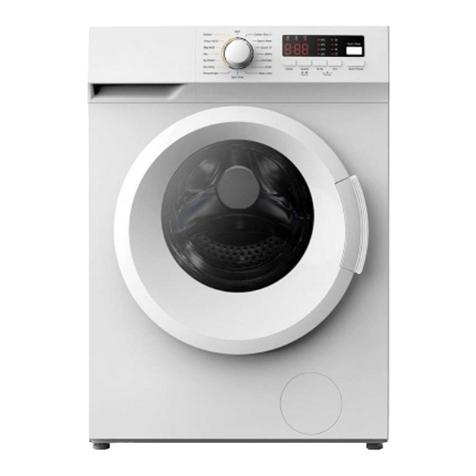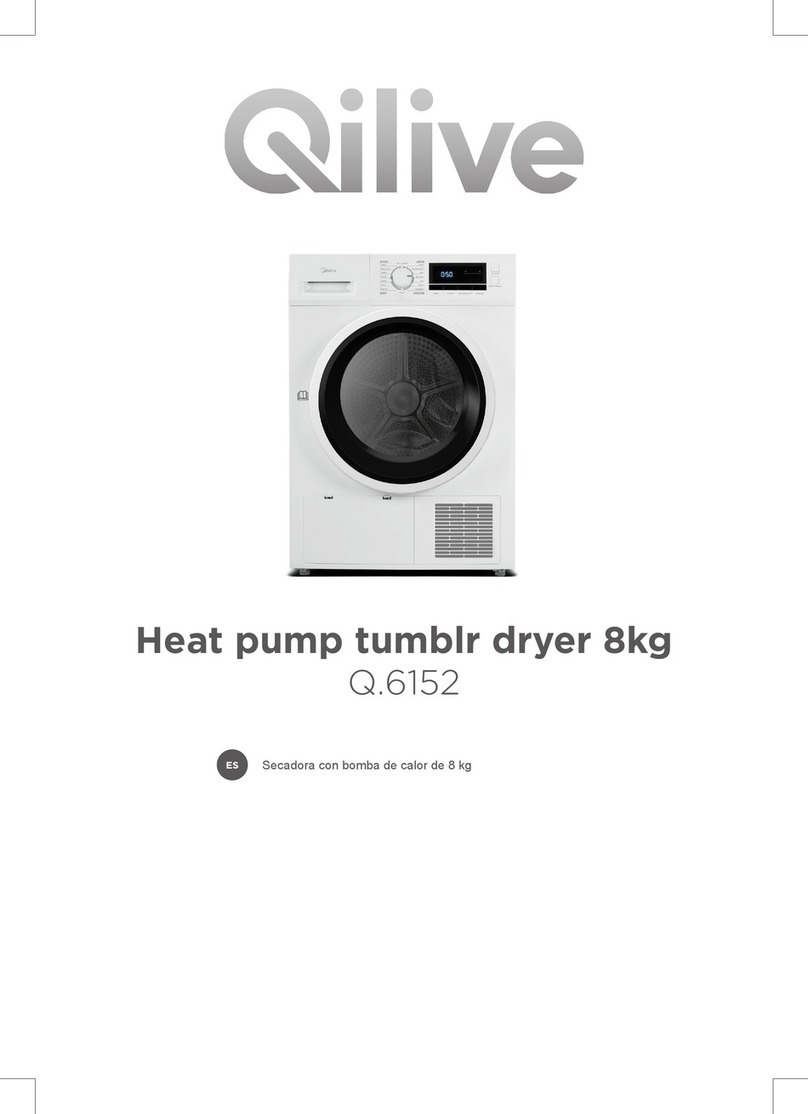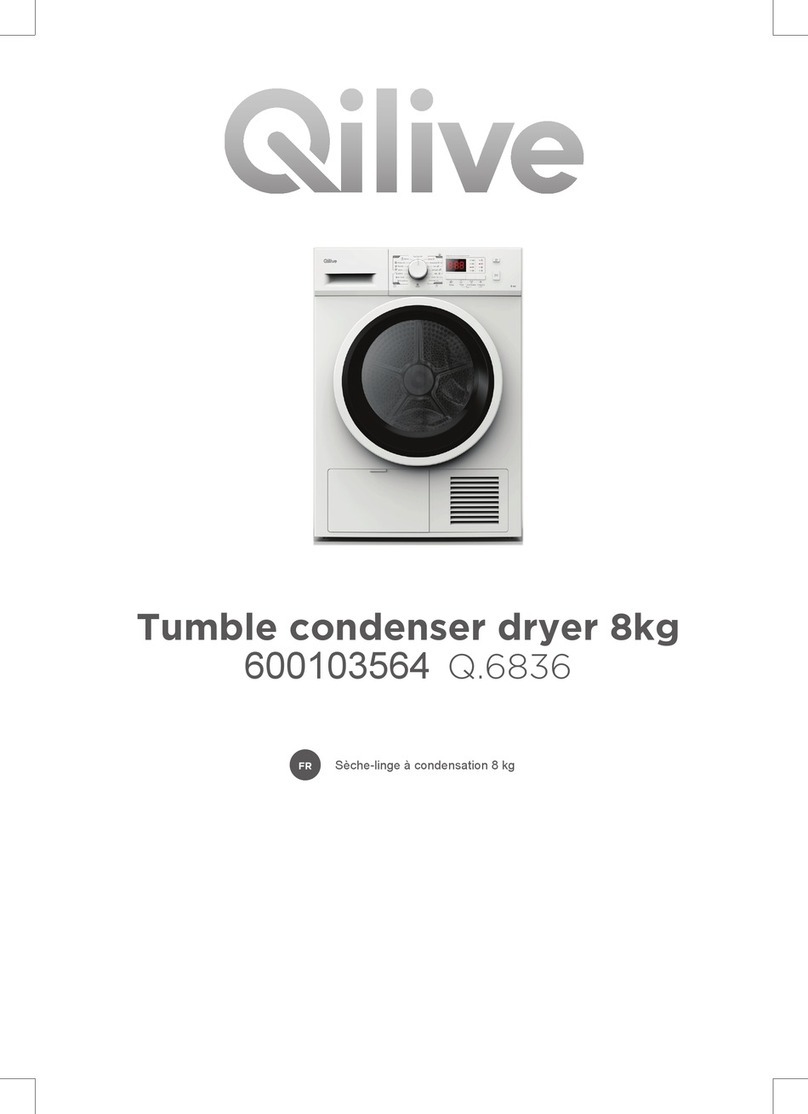
6
46. Do not wash or dry articles that have been cleaned in, washed in, soaked in,
or spotted with combustible or explosive substances (such as wax, oil, paint,
gasoline, degreasers, dry-cleaning solvents, kerosene, etc.). Failure to do so
may result in an explosion.
47. If it is unavoidable that fabrics that contain vegetable or cooking oil or have been
contaminated by hair care products be placed in a tumble dryer they should rst be
washed in hot water with extra detergent. This will reduce, but not eliminate, the hazard.
48. Never attempt to operate this appliance if it is damaged, malfunctioning, partially
disassembled or has missing or broken parts, including a damaged cord or plug.
49. Do not allow children on or in the appliance. Close supervision of children is
necessary when the appliance is used near children.
50. Do not use the appliance when your hands are wet.
51. Do not store plastic, paper, or clothing that may burn or melt on top of the dryer
during operation.
52. Do not dry articles containing rubber, plastic, or similar materials such as padded
bras, tennis shoes, galoshes, bath mats, rugs, bibs, baby pants, raincoats, plastic
bags, or pillows that may melt or burn. Some rubber materials, when heated, can
under certain circumstances produce re by spontaneous combustion.
53. The door shall be opened only after the programme of the drying machine is
completed. Do not open the door before the programme is nished to avoid the
human skin from being scalded by hot steam or an overheated drying machine.
54. Remove all packaging materials before using the appliance. Keep the packaging
materials away from children they pose a risk of swallowing and suocation.
55. The tumble dryer is not intended for outdoor use.
56. Before connecting the tumble dryer, ensure that the connection data on the data
plate (fuse rating, voltage, and frequency) match the mains electricity supply. If in
any doubt, consult a qualied electrician.
57. The appliance corresponds to protection class I and may only be connected to a
plug with a protective conductor that has been installed properly. When connecting
the appliance to the mains, make sure that the mains voltage is correct. You can
nd more information about this on the rating plate.
58. The electrical safety of this tumble dryer can only be guaranteed when correctly
earthed. It is essential that this standard safety requirement is met. If in any
doubt, please have the household wiring system tested by a qualied electrician.
59. The manufacturer cannot be held liable for the consequences of an inadequate
earthing system (e.g. electric shock).
60. WARNING: The socket and the grounding wire must be installed by an electrician
to prevent incorrect installation or use of the socket and to guarantee the safe use of
electricity. No connection between the grounding wire and the neutral wire, otherwise
the cabinet will be charged, which is likely to cause the danger of electric shock.
61. Do not connect the tumble dryer to the mains electricity supply by an extension
lead, multi-socket adapter, or similar. Extension leads are a re hazard and do
not guarantee the required safety of the appliance.
62. The manufacturer accepts no liability for damage caused by improper use.
63. The packaging is designed to protect the appliance from damage during
transportation. The packaging materials are environmentally friendly and should
be recycled. Recycling the packaging can reduce the use of raw materials in the
manufacturing process and the amount of waste in landll sites.
64. This marking indicates that this product should not be disposed with other
household wastes throughout the EU. To prevent possible harm to the
environment or human health from uncontrolled waste disposal, recycle it
responsibly to promote the sustainable reuse of material resources. To return
your used device, please use the return and collection systems or contact the
retailer where the product was purchased. They can take this product for
environmental safe recycling.






























